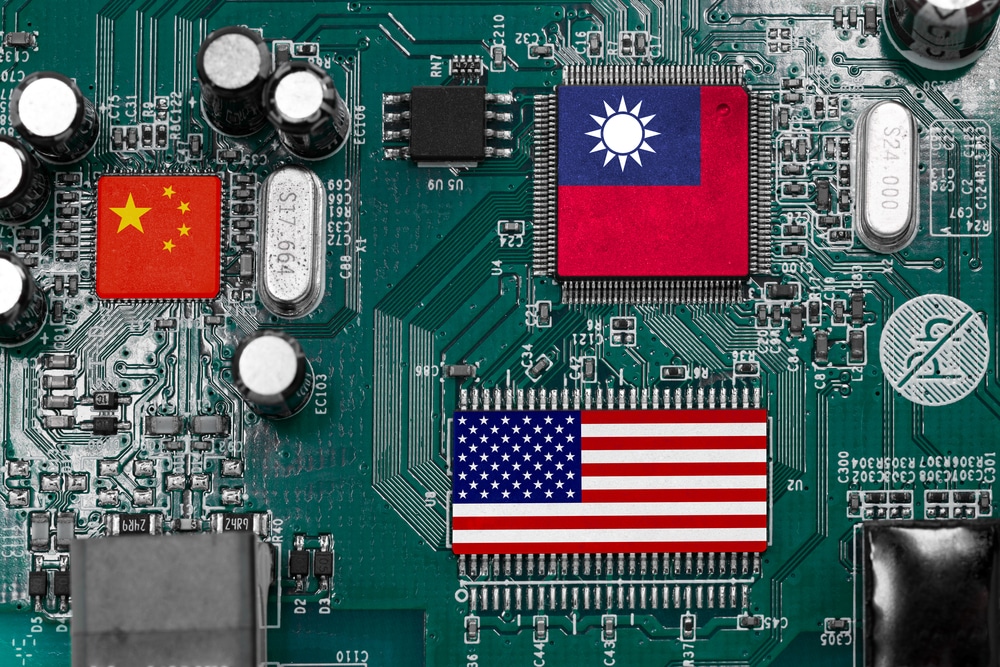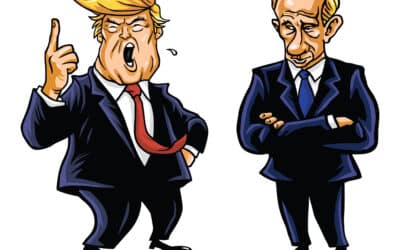With Taiwan’s presidential election now concluded, and the Democratic Progressive Party (DPP) candidate William Lai Ching-te having won a plurality due to the failure of the major opposition parties (the KMT and TPP) to combine behind one candidate, tensions in East Asia are likely to increase.
As reported by Aljazeera, in the weeks preceding the election Beijing had (again) “denounced Lai as a dangerous separatist,” and said he represented a “threat to peace in the region if he won.” The Chinese government’s comments are neither surprising nor propitious; Lai has been a staunch advocate of the island’s independence, which he maintains is already achieved. With Beijing describing the vote as a choice between “peace and war,” U.S. hawks will doubtlessly be ready to trot out their favorite line in defense of furthering American commitments to the defense of Taiwan: “But—we need those microchips!”
Official U.S. policy recognizes that there is one China and its official government is in Beijing, and acknowledges Beijing’s claim that Taiwan is a part of China. That makes the continuous, large scale sale of arms and the placement of U.S. troops on the island provocative, to say the least. What it represents is intervention in a seven-decade long civil war using the threat of Taiwan’s microchips being seized or destroyed as a winning pitch because obviously empty rhetoric about democracy and civil rights is getting a bit tired.
Apart from the clear folly of provoking (another) conflict that likely can’t be won at any acceptable cost is the complicated story of Taiwanese semiconductor manufacturing and its centrality to the global economy. Its existence is not made safer by belligerence from either the U.S. or its clients in the region.
First, as technology becomes more sophisticated it becomes more expensive to produce. In the case of a cutting edge “fab”—a factory for manufacturing semiconductors or integrated circuits—these can cost upward of $12 billion just to build. Back in the heyday of American manufacturing, before the rise of globalized shipping and communication that made today’s highly diversified supply chains and on-demand ordering possible, companies such as Intel designed and manufactured chips in their own fabs. As rapid and cheap communications proliferated, by the mid-1980s companies such as AMD began to move away from this traditional, integrated mode of production. Instead, they began essentially contracting out the very expensive production of the actual product once its design had been perfected.
TSMC’s founder, Morris Chang, took this possibility borne of increasing globalization to create a so-called “pure play” semiconductor fab. With the help of the Taiwanese government, which gave him $100 million in initial support, Chang created a company that would specialize solely in the manufacture of chips designed by others. By doing this he could focus its resources strictly on production and production improvements, which over time expanded into vast qualitative differences.
And while the search for cost savings initially drove firms like Qualcomm to look for strategic partners, what enabled TSMC to eventually grow into the only player in town was its commitment to being what the The Wall Street Journal called the “Switzerland of semiconductors.” After all, one couldn’t simply hand off the necessary sensitive information about their technological and business needs to rivals with spare fab capacity to produce what they needed (a previously common practice).
It was this combination of cost savings, government assistance, commitment to privacy, fostering of strategic relationships, learning by doing, hub and knowledge economy effects that over the course of decades made Taiwan into a critical node in the global economy. Though this happened relatively by accident—a breakaway province of China becoming so central to the burgeoning digital economy—timing is always a consideration, and it was precisely during the heady unipolar moment of the 1990s and early 2000s that TSMC really began to put distance between itself and its competitors. Who cares where things are located; it’s the end of history and everything is going to wind up being effectively America’s playground anyway, right?
This was not to be.
Predictably, Washington’s two-fold solution was to weaponize this critical choke point in the global economy, threatening to destroy the facilities themselves in the event of an invasion from mainland China, and to start doling out absolutely massive corporate subsidies to rehome critical semiconductor manufacturing so as to insulate itself from the fallout of its hazardous geopolitical stratagems.
Capitalizing on this fear, Intel’s new CEO, Pat Gelsinger, predictably began milking the government for money. It worked like a charm, although he complained when TSMC, a “foreign” company, was given similar subsidies to help build a factory in Arizona—since expanded to a second facility. For their part, TSMC had not wanted to go this route, but had “decided to move forward with the plant [in Arizona] because the U.S. government implored us to do it.”
As the Financial Times reported back in July, there are concerns inside the Beltway that Lai, now president of Taiwan, is a loose cannon. His remarks in July regarding visiting the White House, for example, were “super unhelpful.” Seeking to defuse that particular situation, the Financial Times reported that despite claims by Taiwanese government spokespersons that Washington had subsequently been in contact and no longer had any “serious concerns” regarding the matter, the White House denied having made any such inquiries—highlighting why, according to former White House China official Dennis Wilder, why the Biden administration was “very anxious” about Lai. Continuing, he explained to the Financial Times that the Biden administration felt “hamstrung,’ as “any public rebuke could spark [more] support for Taiwan from Congress.” Indeed, the Taiwan lobby certainly makes sure the right pockets are being padded. “What,” asked Wilder, “can they [the Biden administration] actually use for leverage with a politician like Lai?”
Indeed, what can the world empire do to reign in a client beneath committing to fight a major war for them?
(Cough…Cough…)
Combining Washington’s urgent push to gain cutting edge semiconductor independence with its fear of moving too fast and provoking Beijing, The Washington Post mused that an “upset victory” by the KMT, the DPP’s major opposition party, might be desirable as the election of the more Beijing friendly of Taiwan’s political parties might buy Washington some quiet time to better prepare its “deterrent capabilities.”
Read: military buildup and attempted insulation of its own economy.
This is all folly.
Weaponizing interdependence will only prompt further decoupling, lowering the cost of a war between the United States and China. Given that such a war must not happen, the costs of going to war should be raised not lowered.
The status quo has worked out to everyone’s advantage for decades; only the most reckless or foolish would try to see it altered.
It was good to see, therefore, especially given some of his prior statements, that when Joe Biden was asked for a reaction to Saturday’s elections, he stated clearly: “We do not support independence.”
Hopefully he remembers that.
















